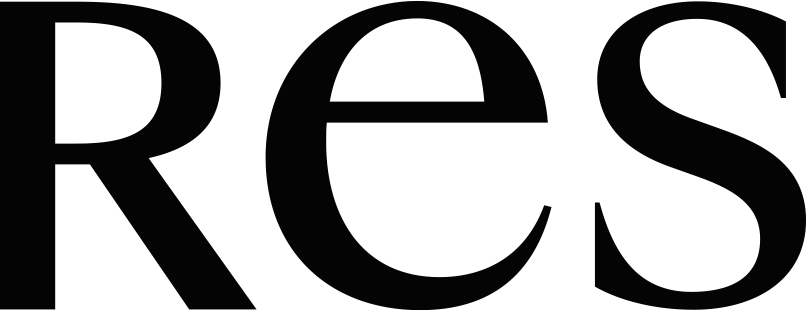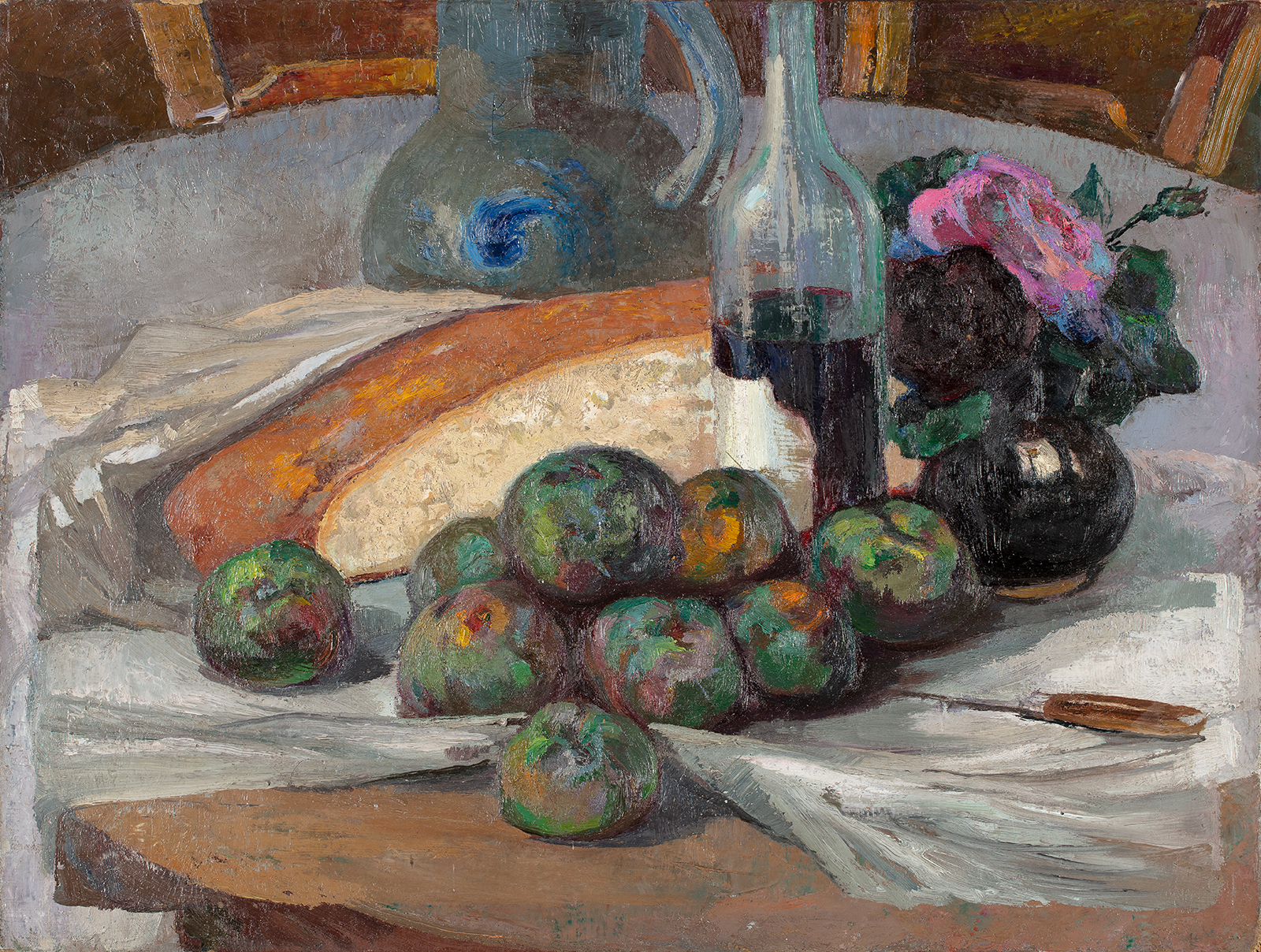The purpose of studying this still life was to identify the materials present as well as their application in order to contextualize and compare them to Cézanne’s technique.
The white pigment was first analysed to exclude the presence of titanium white, which would have been contradictory to the supposed period of the work. Subsequently, high-definition scientific imaging was conducted on the front and back of the painting: direct light, raking light, ultraviolet, infrared reflectography, Dinolite microscope and radiography.
This still life depicts a table on which apples, a knife, a loaf of bread, a carafe, a bottle of wine, and a pot containing flowers are placed. In the background, two wooden chairs can be vaguely seen.
The visible surface is directly painted on the canvas without any preparation, which is not usual in Cézanne’s practice. In fact, the autograph works studied in parallel are all prepared.
A luggage label from the Gare d’Orsay was found affixed to the internal edge of the frame. Since the station was in operation from 1900 to 1939, it is likely that the frame was made during this period or prior to these dates.
Infrared reflectography provides limited information about the execution technique. The drawing is not clearly identifiable. When present, it is scarcely discernible in reflectography, either because of the material used (invisible due to infrared transparency) or the thickness of the layers. However, some construction elements can be observed, such as on the knife in the foreground, the loaf of bread, or even the slight change in composition at the lower right corner of the table.
The painting was executed in two distinct stages, with subsequent adjustments made to the foreground. Although these two phases are distinguishable in direct light, the exact chronology was confirmed by ultraviolet imaging, which highlighted the difference in fluorescence between the colored layers.
Thus, the greenish fluorescence allows for the identification of a varnish based on natural resin, covering the initial composition. The modifications, on the other hand, do not fluoresce or fluoresce very little and appear purplish. They mostly involve tonal nuances that do not alter the composition, except for the table, whose shape and position have changed.
The paint is applied, for the most part, with heavy strokes of color deposited using brushes of various sizes, or with a palette knife (as seen on the tablecloth and in the background). The material is sparingly diluted and thick: the paint strokes are juxtaposed while overlapping in some areas.
Color is sometimes applied ‘raw’ before being mixed directly on the canvas or on the brush, creating a distinctive effect on certain elements, such as the apples depicted with a multitude of hues.
This technique is not typical of Cézanne’s approach. In the latter’s works, the material is usually less impastoed, worked through juxtaposed and regular strokes that build volume with color and chromatic synthesis, sometimes playing with reserved areas of canvas.
While certain characteristics are found in the studied painting, the modeling is not achieved here through the juxtaposition of hues, but through highly thick and superimposed layers that emphasize the drawing. Other elements are rendered with a certain lack of finesse, such as the bottle or the flowerpot.
In Cézanne’s works, deliberate errors in perspective are often noticeable, with objects being painted independently of each other, following their own rules of perspective. This results in a tension that renders the composition unbalanced, where objects placed in the background sometimes appear to shift to the foreground or float in space. In the studied still life, the composition is quite static, the perspective is respected, and the planes are clearly identifiable.
Radiography revealed an underlying composition that is difficult to see under direct light and infrared reflectography: a portrait of a man appears to the left of the composition. Located on the reverse side of the canvas, this portrait was covered with a layer of paint to conceal it.
By dismantling the frame, other elements of the composition became clearly visible. They appear to be a man and a woman in the foreground within an interior. The portrait of the man could not be identified due to insufficient elements.
Unlike the front side, the reverse side of the canvas was prepared; the material is applied quite thickly with broad brushstrokes, shaping the background and the clothing while still wet. The woman’s dress corresponds to the colors used for the tablecloth on the visible side. It appears that the same artist painted both sides of the picture.
Despite the fact that no definitive conclusions can be drawn from the material information, as no elements are discriminative, it is unlikely that the work is by the hand of P. Cézanne. Indeed, despite the proven use of lead white and the label from Gare d’Orsay, which could correspond to the artist’s era, the technical elements align poorly with the master’s technique.
Anonymous, Still Life with Bread, Apples, and Flowers, 19th century, oil on canvas, private collection.













